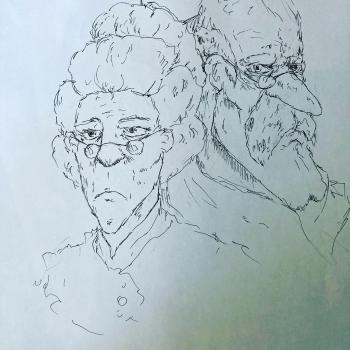Being both rather busy and rather tired, in a quick race around the internet hoping I hadn’t missed anything interesting (I hadn’t), I happened to read this and this back to back. You can click if you want to, but you won’t really be missing anything on either count.
The first is Cecile Richards being what MSN justifiably called “tone-deaf” for tweeting this:
“Excited for all the babies this year who will be named Kamala!”
This warm-fuzzy sentiment was punctuated with one of those smiling, heart-encrusted emojis, and an exclamation point. Lots of people on Twitter immediately described the tweet as “ghoulish” given that Richards was in charge of Planned Parenthood for about 12 years.
So anyway, right after scrolling through that—which is just an aggregation of tweets, because that’s what news reporting is now—I clicked on something that looked interesting, but then turned out not to be. I’ll pull some of it out, shall I?
The word “gimmick” is believed to come from “gimac,” an anagram of “magic.” The word was likely first used by magicians, gamblers, and swindlers in the nineteen-twenties to refer to the props they wielded to attract, and to misdirect, attention—and sometimes, according to “The Wise-Crack Dictionary,” from 1926, to turn “a fair game crooked.” From such duplicitous beginnings, the idea of gimmickry soon spread.
And
For Sianne Ngai, a professor of English at the University of Chicago and the author of “Theory of the Gimmick” (Harvard), the answer is: everything, or at least everything to do with the art consumed and produced under capitalism. One of the most original literary scholars at work today, Ngai has made a career of unravelling the social and political histories that shape our aesthetic judgments (“How beautiful! How hideous!”) of novels, films, and photographs, as well as of show tunes and YouTube videos, bath toys and smiley faces. Her work draws attention to the public dimensions of apparently private reactions to art, and to the world in which these aesthetic experiences arise—a “capitalist lifeworld,” she writes, where art is increasingly trivial and artifice reigns supreme, where fun and fright merge to create the same arresting, alienating magic as Nabokov’s mirror.
And
Although Ngai’s books are conceptually and philosophically dense, their appeal comes from how they tap into our ordinary use of language. Unless I collect art, or live in a many-windowed house at the edge of a westerly peninsula, where the sea is gilded by the sun and silvered by the moon, I am unlikely to have regular encounters with things I would call “beautiful” or “sublime,” and I may well find the rush and roar of such Romantic descriptions embarrassing. But not a day goes by when I do not call something—my son’s stuffed animals, a dress, a poem by Gertrude Stein—“cute,” or a novel or an essay “interesting.” And I can’t count the number of times I’ve called a kitchen gizmo my husband swears we really, really need (but we really, really don’t) or a colleague’s online persona “gimmicky.” “Theory of the Gimmick” finds in the pervasiveness of the gimmick the same duelling forces of aesthetic attraction and repulsion that shape all Ngai’s work. “ ‘You want me,’ the gimmick outrageously says,” she writes. “It is never entirely wrong.”
It kind of goes downhill from there. The thing that I liked best about it, as I labored along, is that the person who is sitting around writing dense prose about Marx and gimmicks and capitalism cannot possibly know anything about what the last in that list even is, having never had to endure the material consequences of her own thinking. For her, it is entirely theoretical, because when the revolution comes, she expects to still be able to buy an expensive latte and nice computer paper for her printer, and even ink, and probably a new device that will let her tweet out a lot of her sublime prose onto the internet.
This sort of thing is both gimmicky, I think, and decadent. People who really want to know about money should have to go spend time with people who don’t have any, and not in a sneering, condescending way, but as disciple going to learn from master. Not that the poor know more than the rich, only that certain sectors of academia do not always know of what they are talking.
Also, anyone can come across the sublime if they open their eyes. I live in a fairly ugly Northeastern town, full of blight and pockmarked parking lots and I still manage to discover it by concentrating my mind on things above (Jesus), and by taking walks and stuff. This person should try going to church where the stage is set for true beauty to be encountered at least once a week, even though gimmicks may crowd around the margins. Her view of reality is cluttered and, oh I’ll say it, ridiculous.
You know why the western world is so junked up by gimmicks and flat, useless “art?” I’ll tell you—because even though everyone knows what Planned Parenthood does, no one even cares. If you want “the sublime” then stop lying. Babies, for example, are sublime, if only they can make it out into the light. People are not the same as things. Certain kinds of ideologies will eventually ruin your ability to see things as they are. Beauty only comes when you tell the truth.
So anyway, I guess I’ll go scrub my kitchen floor again. Have a nice day.













